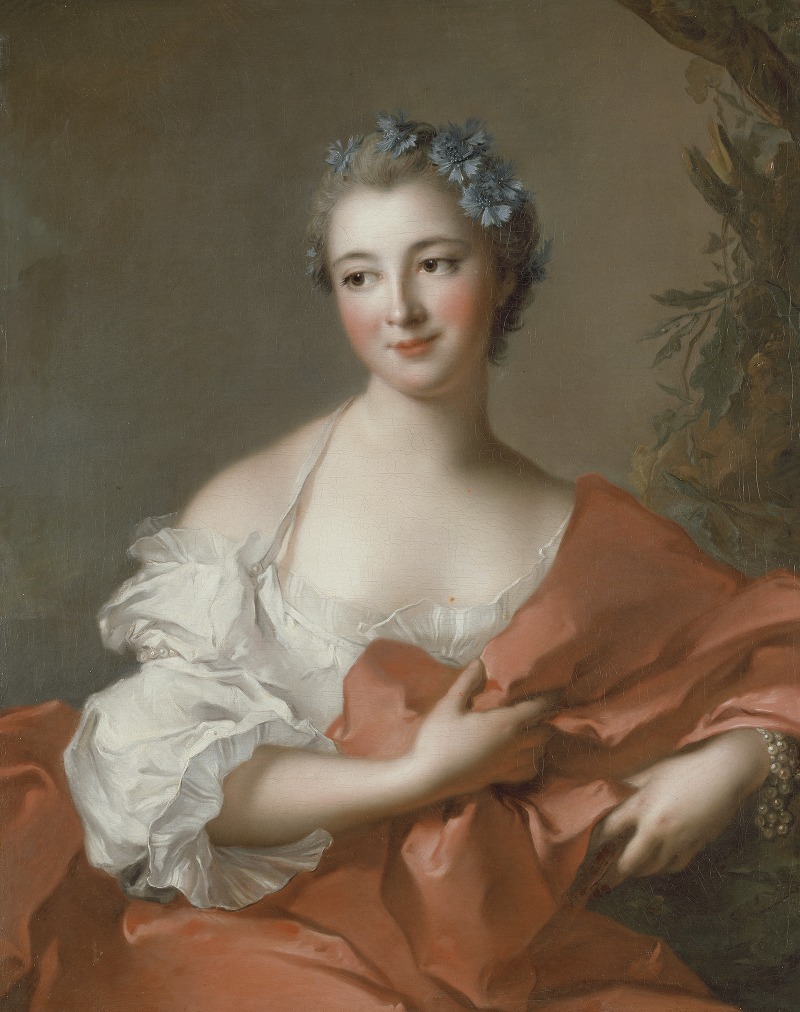
Marquise de l’Hôpital
A hand-painted replica of Jean-Marc Nattier’s masterpiece Marquise de l’Hôpital, meticulously crafted by professional artists to capture the true essence of the original. Each piece is created with museum-quality canvas and rare mineral pigments, carefully painted by experienced artists with delicate brushstrokes and rich, layered colors to perfectly recreate the texture of the original artwork. Unlike machine-printed reproductions, this hand-painted version brings the painting to life, infused with the artist’s emotions and skill in every stroke. Whether for personal collection or home decoration, it instantly elevates the artistic atmosphere of any space.
Jean-Marc Nattier was a prominent French Rococo painter known for his portraits of the French aristocracy during the 18th century. One of his notable works is the portrait of the Marquise de l’Hôpital. This painting exemplifies Nattier's skill in capturing the elegance and grace of his subjects, as well as his ability to infuse his portraits with a sense of intimacy and personality.
The Marquise de l’Hôpital, whose full name was Marie-Marguerite de Valois de Villette de Mursay, was a member of the French nobility. She was married to the Marquis de l’Hôpital, a title that indicates her high social standing. The portrait by Nattier is believed to have been painted around the mid-18th century, a period when Nattier was at the height of his career and was favored by the French court and aristocracy.
In the portrait, the Marquise is depicted in a typical Rococo style, characterized by its lightness, elegance, and use of soft colors. Nattier was known for his ability to render luxurious fabrics and delicate textures, and this painting is no exception. The Marquise is shown wearing an elaborate gown, likely made of silk or satin, adorned with lace and ribbons. Her attire reflects the fashion of the time, which was opulent and designed to display wealth and status.
Nattier's portraits often included symbolic elements that hinted at the sitter's personality or interests. While specific details about the symbolism in the Marquise de l’Hôpital's portrait are not well-documented, it is common for such portraits to include items like flowers, musical instruments, or books, which could suggest attributes such as beauty, artistic talent, or intelligence.
The background of the painting is typically understated, focusing attention on the Marquise herself. Nattier often used a soft, diffused light to create a sense of depth and to highlight the features of his subjects. This technique helps to create a lifelike representation, making the Marquise appear almost as if she could step out of the canvas.
Jean-Marc Nattier's work, including the portrait of the Marquise de l’Hôpital, is significant for its contribution to the Rococo movement and its reflection of the social and cultural milieu of 18th-century France. His portraits are valued not only for their aesthetic qualities but also for their historical importance, providing insight into the lives and appearances of the French elite during this period.
The painting of the Marquise de l’Hôpital is part of a larger body of work by Nattier that continues to be studied and admired for its artistic merit and its portrayal of the elegance and sophistication of the French aristocracy. Nattier's ability to capture the essence of his subjects with grace and precision has ensured his place as one of the leading portraitists of his time.
















